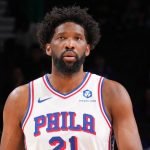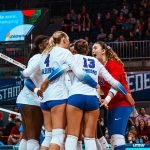Jim Nill had a clear mandate this time last year: to improve an old and slow blueline. Against Vegas in the 2023 playoffs, the Stars had Ryan Suter on their top pair, with Esa Lindell and Jani Hakanpaa as the next men up. It was nowhere near good enough, which is why Vegas’ win always felt inevitable. This year was the complete opposite. With the addition of Chris Tanev at the trade deadline, the blueline was the one thing that gave the Stars a chance to take control of a winnable series over Edmonton.
We all know how that ended, but now fans want to know how Dallas can keep the best parts and leave the worst parts—admittedly few and far between—behind. The challenge to build on Dallas appearing in consecutive Western Conference Finals is simpler, yet more complex.
Nill doesn’t need to improve the blueline so much as keep it intact. Dig through any autopsy report looking to assign blame for why the Stars lost to the Oilers, and nobody will mention the top four. That’s the irony of this offseason. The part of the team that defined it and allowed it to make history—Dallas became just the seventh team in the salary cap era to employ seven or more 20-goal scorers—the offensive depth, is also its most volatile. Joe Pavelski has called it a career, while Matt Duchene’s fate remains a mystery. Assuming both are gone, 132 points are vanishing from this year’s team.
This is the road ahead for Nill: he has to keep what he already fixed (the blueline) while replacing what he worked so hard to build (forward depth). It’s a lot to address for a team that doesn’t need much. However, when “not much” can mean someone playing above his role (Suter last year and Pavelski this season), these can be the differences that add up, as we’ve seen. So how does Nill get the band back together without all the same players?
Keeping Tanev obviously tops the list. He wasn’t just a good addition to improve the blueline; when all was said and done, his performance felt like a missing piece. In the playoffs, Dallas gave up an extra 15 unblocked shots when the 34-year-old wasn’t on the ice. In his 19 regular-season games he had the highest expected goal share of any defender (61 percent). It’s hard to imagine the blueline without him. Even though Miro Heiskanen still has Norris Trophy aspirations, it was the former Calgary blueliner who took on all the top matchups like a progressively harder series of Street Fighters bosses, drawing Jack Eichel, then Nathan MacKinnon, and finally Connor McDavid.
Any other blueline changes will most likely be seen as a luxury. (Although I would advocate for a Suter buyout not because he was bad this season but because like Pavelski, he could easily hit a wall, and it may have even started against Edmonton. Why not get in front of it for a guy who turns 40 in January?) Besides, you can always do something at the trade deadline.
None of that means the rest of the roster will return intact. Changes are definitely coming, however incremental. The first domino fell last week when Dallas traded Ty Dellandrea to San Jose for a 2025 fourth-round pick. I have my own opinions about that. (No, he didn’t gain his coach’s trust but what trust did Radek Faksa, Craig Smith, and regular-season Evgenii Dadonov engender?). But according to Elliot Friedman, the Stars are interested in Vegas’ William Carrier to fill out the fourth line, which makes sense given how often they have seen him up close (three postseason appearances versus Dallas since 2020). The underlying numbers for Carrier make him look genetically engineered to excel in that sort of depth role.
Does that tell us anything? Maybe. My initial response to this news was “who cares?” Carrier is an excellent role player, but hardly a needle mover. After all, we’re talking about a career fourth-liner.
But then I thought about Nils Lundkvist. I have no idea what the Swede’s fate is, but if the motive to trade Dellandrea was to give him a fresh start, then the motivation for Lundkvist must be the same. Pete DeBoer had no intention of playing him once the postseason rolled around. While it’s not something we can quantify, it’s probably safe to say the five-defender route didn’t work, was never going to, and in fact might have played a role in the loss to Edmonton. Neither the Panthers nor the Oilers have all-world depth defenders, but nobody is playing fewer than 12 minutes a night, either.
Perhaps Nill intends to make moves that DeBoer has no chance of second-guessing? And perhaps this will come at the cost of something big or splashy? This would be in line with Nill’s efforts in 2016, when fresh off a crushing seven-game defeat to the St. Louis Blues (no thanks to an injured Tyler Seguin), all Dallas did in the offseason was bring in Jiri Hudler and Lauri Korpikoski.
Certainly, if they want to, the Stars can entertain more dramatic possibilities. In fact, this year’s trade board runs the gamut. Since 2017, only 18 forwards have a higher goals-per-60 than Patrik Laine, and he’s about to be traded for pennies on the dollar. During that span, only 12 forwards have a higher points per 60 than Mitch Marner, and Dallas is one of four teams rumored to be in on the star winger. Jakob Chychrun, Torey Krug, Kaapo Kakko, Mathieu Joseph, Arthur Kailyev, Jeff Skinner—defensemen, depth, reclamation projects, you name it, the trade board has it.
But I doubt we’ll see any splashy acquisitions. Nill has never been one to aggressively subtract in order to aggressively add. He’s not going to buy out players like Suter or Faksa, even if he should. The reasonable expectation should be for him to keep Tanev, sign Thomas Harley to a bridge deal, bring back Sam Steel, ensure Mavrik Bourque a roster spot while leaving room on the blueline later in the season for Lian Bichsel (should he prove ready), and refine the existing depth so that DeBoer has more players he can trust.
But what about the 132 points Pavelski and Duchene are leaving behind?
Just because the Stars are positioned to have fewer scorers says nothing about whether they’re positioned to be less capable. What’s more important than the 132 points they are losing are the 2,805 even-strength shifts that won or lost the team possession, allowed or failed to allow Dallas to attack on the rush, or succeeded or not in hemming opponents in their own zone with a strong cycle. None of this accounts for how many points Dallas is gaining by giving Wyatt Johnston and Logan Stankoven more minutes and bigger roles, or the ostensible boosts in production for players like Jason Robertson and Roope Hintz, who had down years despite being in their primes.
Besides, scoring was only part of Dallas’ problem. This is a team that was minus-1 on the power play versus Edmonton in 16 opportunities. The Oilers had 12 and scored four times. Whether or not the Panthers choke this series away, Florida has proven that you don’t need a bunch of 50-point forwards to beat them. Focusing on trying to create two dominant lines rather than four good ones may be the key to crafting an attack that can punish opponents rather than merely produce from time to time. That doesn’t mean a big trade won’t happen. Nill’s past is quite intricate; he’s a GM of adaptability more than having any one constant trait.
But it’s worth remembering this is a team that will shed $24.7 million in cap after next year, with Benn, Lindell, Faksa, and Suter coming off the books. Don’t expect Nill to accelerate a tidal wave of change coming in the near future, not when there’s good reason to admire the sandcastle he’s built just a little while longer.
Author
David Castillo covers the Stars for StrongSide. He has written for SB Nation and Wrong Side of the Red Line,…











